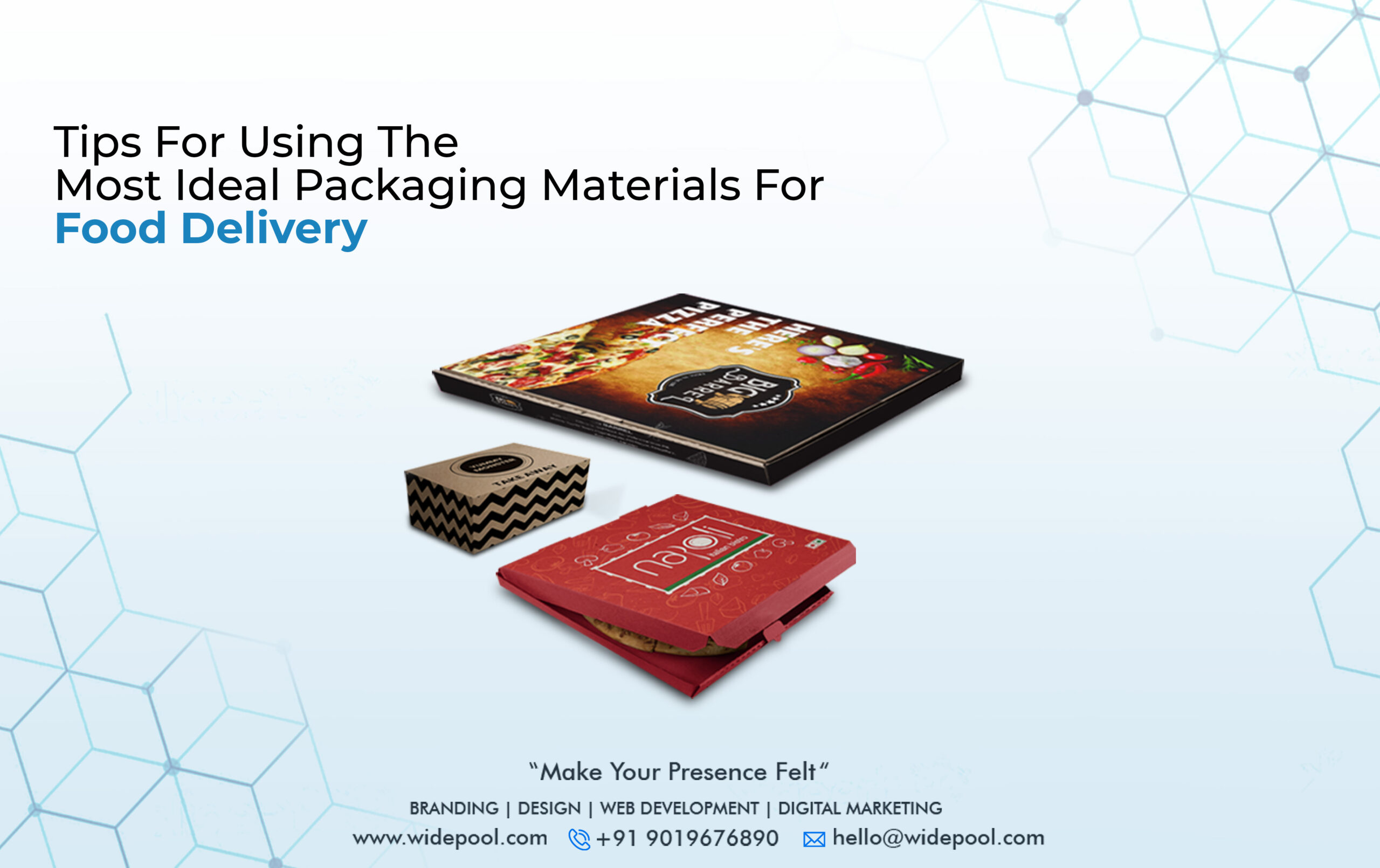Role of Packaging Materials for Food Delivery
Tips for Using Proper Packaging Materials for Food Delivery
Widepool Offers Exemplary Services
Role of Packaging Materials for Food Delivery
Packaging materials for food delivery play a crucial role in ensuring the quality, safety, and overall customer experience of delivered meals. Here’s a brief synopsis highlighting their importance:
- Food safety: Packaging materials act as a protective barrier, preventing contamination and preserving the freshness & quality of the food. They help maintain proper temperatures, protect against physical damage, and minimize the risk of bacterial growth or cross-contamination during transit.
- Product integrity: The right packaging materials help preserve the taste, texture, and presentation of the food. They can prevent moisture loss, maintain crispiness, and preserve the flavours, ensuring that the delivered meals closely resemble the dining experience in a restaurant.
- Temperature control: Insulated packaging materials, such as thermal bags or containers, help maintain the desired temperature of hot or cold food items during transportation. This is especially important for perishable items that require specific temperature ranges to prevent spoilage and ensure food safety.
- Portion control & customization: Packaging materials can be designed to accommodate portion sizes and meal components. They can include dividers, separate compartments, or individual containers, allowing for easy organization and customization of meals based on dietary preferences or specific orders.
- Branding & marketing: Packaging materials provide an opportunity to reinforce your brand identity and create a memorable experience for customers. Branded packaging with logos, colours, and consistent design elements can help promote brand recognition, differentiate your food delivery service, and leave a lasting impression on customers.
- Convenience & user-friendliness: Well-designed packaging materials make it easy for customers to handle & consume the food. They may include features like clear labelling, easy-to-open seals, compartments for condiments or cutlery, and clear instructions for reheating or handling the food.
- Environmental sustainability: The choice of packaging materials can have a significant impact on the environment. Opting for eco-friendly & sustainable packaging options, such as biodegradable or compostable materials, reduces waste and demonstrates a commitment to environmental responsibility.
Tips for Using Proper Packaging Materials for Food Delivery
Here are some additional tips for proper food delivery packaging:
- Insulation: If you’re delivering hot or cold food, consider using insulated packaging to help maintain the temperature. You can use materials like thermal bags or containers with built-in insulation.
- Ventilation: For certain types of food that need to stay crispy or avoid condensation, it’s important to provide ventilation to prevent moisture build-up. This can be achieved by using perforated containers or incorporating ventilation holes.
- Leak-proofing: To avoid any leaks or spills during transit, use containers or packaging that are specifically designed to be leak-proof. This is especially important for items like soups, sauces, or dressings.
- Environmentally friendly options: Consider using sustainable & eco-friendly materials for your packaging, such as biodegradable or compostable options. This helps reduce the environmental impact of your food delivery service.
- Proper packaging for different food items: Customize your packaging based on the type of food you’re delivering. For example, use separate compartments or dividers to keep different components of a meal separate and prevent mixing or contamination.
- Branded packaging: Design your packaging in a way that reflects your brand identity and creates a memorable experience for your customers. This can include using your logo, colours, and other branding elements on the packaging.
- Food safety & hygiene: Ensure that your packaging materials are food-safe and meet the necessary health and safety regulations. This is particularly important for perishable food items that require refrigeration or specific handling.
- Packaging for ease of consumption: Make it convenient for your customers to eat the food by including necessary utensils, napkins, or condiments in the packaging. Consider including clear instructions on how to handle and reheat the food if needed.
- Test the packaging: Before implementing the packaging on a large scale, conduct thorough testing to ensure its durability & effectiveness. Perform stress tests to simulate the conditions it may encounter during delivery and make any necessary improvements.
Widepool Offers Exemplary Services
In summary, packaging materials for food delivery happen to be very important. By choosing the right packaging materials, food delivery businesses can enhance the overall customer experience and differentiate themselves in a competitive market. Remember, the goal is to provide a positive & memorable experience for your customers, so investing in proper food delivery packaging can go a long way in achieving that. If you’re unsure about the best packaging options for your specific food items, consider consulting with packaging professionals or experts who can provide guidance based on your needs & budget. You can always count on Widepool’s experts for the same!

